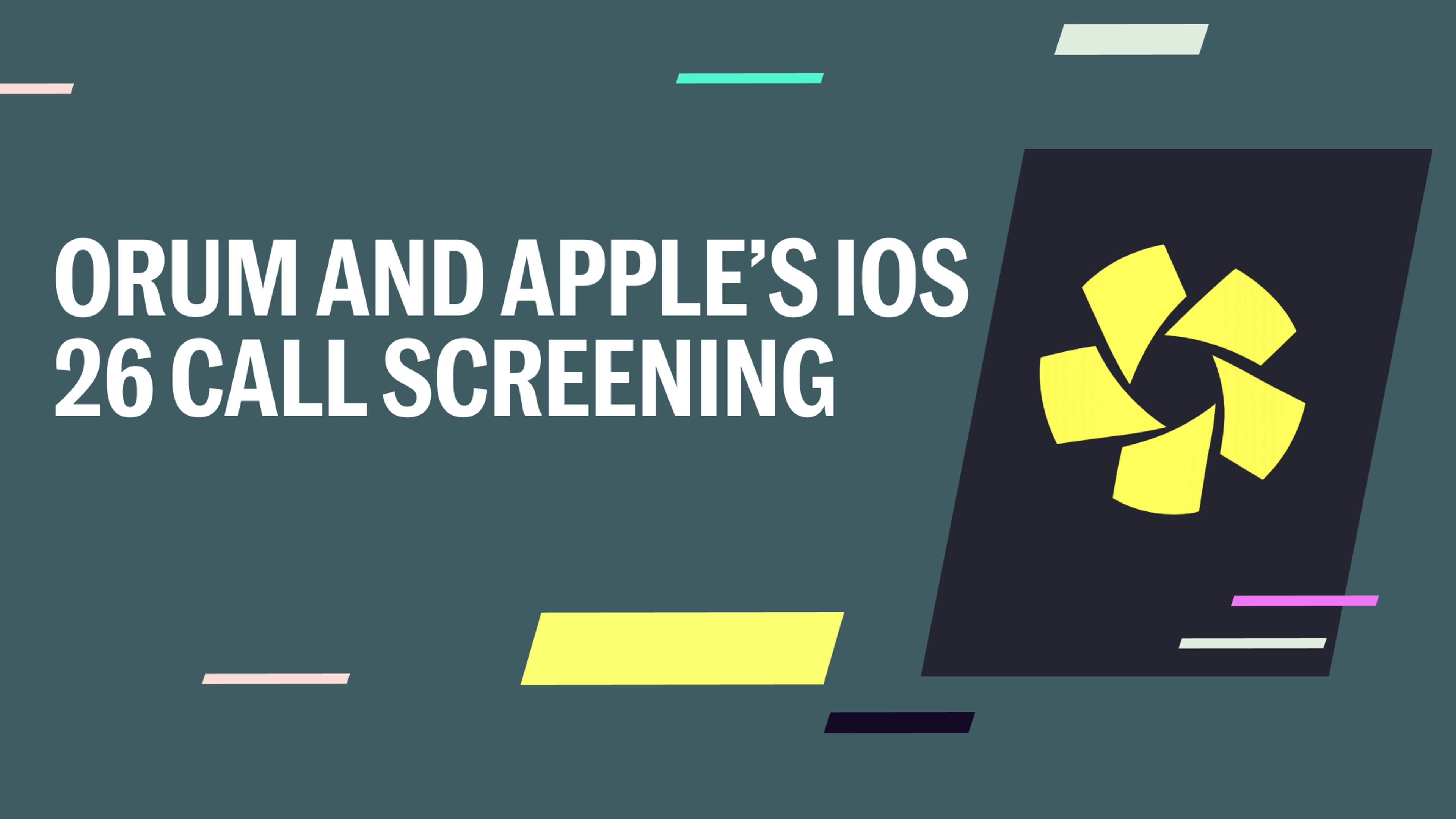Orum and Apple's iOS 26 Call Screening


With the announcement that Apple’s iOS 26 will include a native call and message screening feature, the sales world responded with a collective pause. At Orum, we’ve been getting customer questions already. Will this change cold calling forever? Is this the beginning of the end for outbound phone outreach? Is the option to parallel dialing completely gone now?
Short answer: no. Slightly longer answer: This isn’t new, and Orum is already built for it.
There have been constant changes to telephony over the years, and each one reaffirms what we already know: Having a platform that helps you connect with the right people at the right times will always be important.
Prospects have shown that they're always keen to have a conversation with the right caller. We're excited about the potential these features have to enable even more live conversations. As industry leaders, we're always excited when the phone becomes more powerful.
Here’s what’s new and what it means.
Apple’s Call Screening and Cold Calling
The idea of an AI-powered call screener might sound revolutionary in a press release, but it’s not exactly new in practice. Our data and customer experiences show minimal disruption to real-world calling outcomes from such features.
And it’s worth remembering: the people most likely to use these tools are often the least likely to pick up any cold call to begin with. You're not losing high-intent buyers—you’re avoiding low-probability connects. That’s not a problem. That’s efficiency.
Orum Was Built for Improving Connect Rates
Sales teams using Orum aren’t waiting for a silver bullet. They're already navigating the complex web of gatekeepers, voicemail systems, dial trees, and carrier filters.
Call screeners are just another node on that network.
Here’s what Orum already does to help you adapt:
- Click-to-Call and PowerDialer Modes: When our system detects barriers, such as dial trees or potential screeners, it flags them for manual attention, allowing you to approach with precision, not automation.
- Boost Connect: Our AI-powered caller ID management helps maximize connectability while minimizing spam flags—before the call even happens.
- Voicemail Drop: We’ve seen reply rates increase significantly when voicemails are left. When a rep leaves a voicemail, future connect rates improve by 25%. It works because it’s an opportunity for the seller to provide context for their outreach. Call screening will do the same. Our system enables efficient, compliant voicemail drops that help your message reach even those who stand in the way.
- AI Signaling: Orum’s AI list intelligence provides you with signals on which numbers lead to human connection and which numbers you should remove from your list.
What Orum is doing to navigate iOS 26 Call Screening
Orum’s Product and Engineering teams are already using the developer beta version of iOS 26 for testing and evaluating the best path forward for Orum customers. These include:
- Automated Intros: Orum leverages insights from over 1.5 million dials per day to craft the best possible opening lines that cut through screening tools.
- Automated Detection & Tagging: Use Orum’s existing AI features to identify automatically and flag numbers using call screening, so reps know what to expect with each outbound dial.
- Smartlist Routing for Screened Numbers: Automatically segment screened numbers into their own Smartlists, enabling tailored strategies and talk tracks for higher success.
What Sales Teams Using Orum Should Do Now
The full impact of iOS’s new feature won’t be clear until it’s released publicly in September. But proactive teams can start preparing with these Orum-backed tactics:
1. Use Voicemails Strategically
Screeners may block unknown numbers, but they display your message. Don’t skip the chance to leave a compelling voicemail. It’s your pitch, your value, and your personality—delivered asynchronously.
2. Rotate “Call From” Numbers
Use clean, rotated numbers to protect your reputation. For harder-to-reach contacts, dedicate specific numbers to those calls to isolate potential impact. Turning on Boost Connect will ensure this occurs automatically for you.
3. Leverage Click-to-Call When Needed
Use Orum’s Click-to-Call for flagged prospects or when targeting high-value contacts who may be behind a gatekeeper: human or AI.
4. Have a Great Opener Ready
Cold calling requires the ability to immediately capture attention and provide the prospect with a reason to stay on the line. The same remains true with call screeners. Ensure reps have a standard opener they use that explains the reason for the call immediately.
Warmth. Clarity. Human tone. Those are your best tools, whether you’re live or recorded.
Call Screeners are not revolutionary
We’ve seen this before. “Do Not Disturb” and Focus modes were supposed to “kill” cold calling. They didn’t. People still take calls if the conversation is relevant to them. Conversations remain the best way to drive pipeline. This change is an opportunity to ensure those conversations are with the right people more often.
Orum has always believed in empowering sellers to earn those conversations. That hasn’t changed either. And if a gatekeeper (human or AI) helps ensure buyers only take calls they want? Great. That’s time better spent for everyone.
The truth is, buyers still want to be connected to solutions that solve real problems. The method may evolve, but the goal is the same: conversations that matter.
Cold calling is not dead
Call screening isn’t a death knell. It’s a signal: that quality matters more than ever.
Sales teams who focus on relevance, strategy, and smart tools (like Orum) will win, not because they dodge the screener, but because they deliver something worth answering for.
So while the industry spins up fear, we’ll do what we always do: test, learn, adapt, and keep sellers talking.
Orum’s ready.





